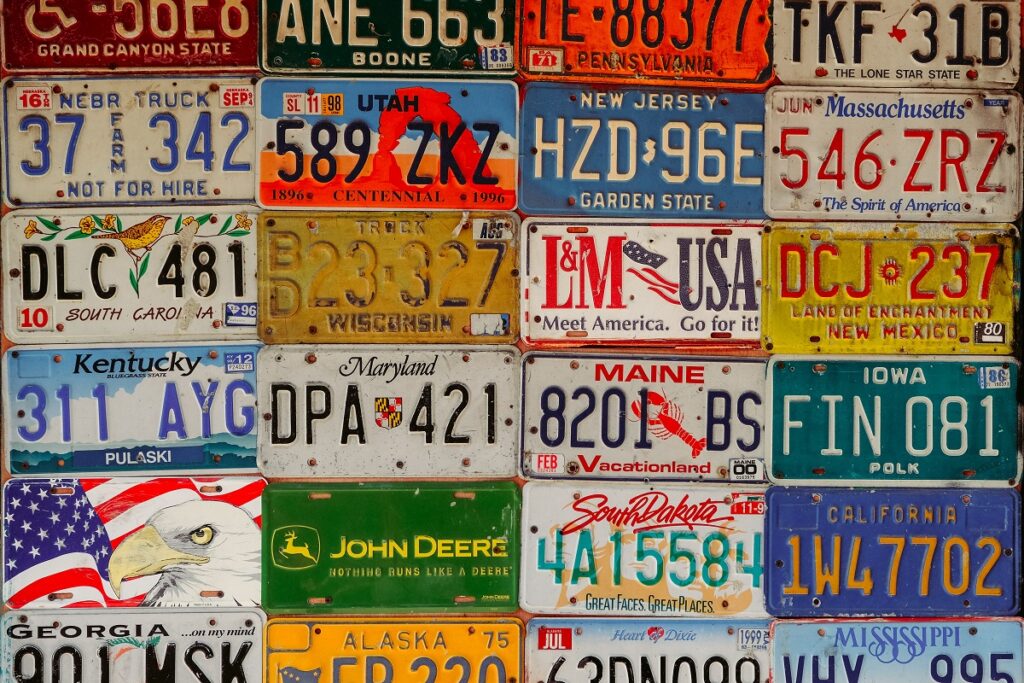If you’re new to the world of handicap parking permits, you might be a tad confused about all of the different options. Maybe you’ve noticed that some people have different colored placards, or that others have a special license plate on their car that allows them to park in handicap parking places.
Although it can seem overwhelming, once you break down the information, you’ll be able to determine what’s best for you. If you’re wondering “What’s the difference between disabled parking placards and disabled parking license plates?”, read on for all the info you need.
What is a disabled parking placard?
Let’s start with the basics. You are eligible to apply for a disabled parking placard if you have a medical condition that affects your mobility. This means that you have trouble walking or it’s difficult for you to walk long distances. The medical condition can be any of a wide variety of illnesses and/or injuries – anything from asthma to a heart condition to a broken leg. As long as your doctor can verify that you could benefit from more convenient parking places, you can apply for a disabled parking placard. You can also get an online consultation to see if you qualify.
Placards are issued by your specific state’s Department of Motor Vehicles (DMV). They typically come in two types: temporary and permanent. Temporary placards are for people with a disability that will only last for a short time; these placards are generally valid for a few months (although the exact time frame varies from state to state). Permanent placards are for people with long-term disabilities; these placards typically have to be renewed every couple of years but are meant for permanent use. The two placards are also usually different colors so that they’re easy to tell apart. In most states, you’ll have to pay only a small fee of a few dollars or no money at all to get a handicap placard.

What is a disabled parking license plate?
When you apply for your handicap parking permit, you also have the option of selecting a disabled parking license plate instead of a placard. These license plates are marked with a wheelchair symbol so that you have access to handicap parking without having to display a placard.
In most states, the application process for a license plate is almost identical to a placard – the only difference is that you usually have to provide a current registration card for your vehicle (which must be registered in your name), and you have to surrender your current license plates. There can also be additional fees attached to getting a handicap license plate, although in some states, if you’re a veteran, the fees are waived.
What’s the difference between handicap parking placards and handicap parking license plates?
There aren’t a ton of differences between the two, but the main one you should consider is that you probably shouldn’t get a handicap license plate if your disability is temporary. If your doctor is not recommending you have a permit for long-term use, there’s really no point in getting a handicap license plate to put on your vehicle.
The other super important thing to consider is that you can’t switch the license plate to another vehicle (unless you’ve bought a new car). With a handicap placard, you have the freedom to carry the placard with you to any vehicle; as long as you’re the driver or the passenger, the placard can be displayed in order to give you access to handicap parking places. With a handicap license plate, you’re limited to only using your own vehicle.
In some states it might be possible to get a placard in addition to your license plate, but you’d have to approach the DMV to see if this is possible. There’s also a little extra legwork when it comes to getting a license plate, since you’ll need to provide car registration and to turn in your old plates. With both placards and license plates, you’ll need to follow all parking regulations and abide by any posted signs. Failure to do so could result in tickets or fines.
How can you apply for each of these types of permits?
The basics of the application process are the same for both. You’ll need to get an application from the DMV either in person or online. You’re required to get a health care professional to help you complete the medical certification portion of the application.
Depending on your state, these medical professionals can be different types, including a licensed:
- Physician
- Surgeon
- Chiropractor
- Optometrist
- Podiatrist
- Physician Assistant
- Nurse Practitioner
- Certified Nurse Midwife

The medical professional will need to indicate what physical disability you have and what type of permit you should receive (temporary vs. permanent). After filling out the rest of the application with information like your address, date of birth, etc., you can submit your completed application to the DMV. If you’re applying for a disabled license plate, you will have to include information about your current vehicle (including license plate number, vehicle identification number, and the vehicle make and year). As mentioned above, you’ll also need to go in person to turn in your old license plates once the handicap plates have been given to you. Some states may also require you to pay vehicle registration fees at the same time you submit your application.
Whether you decide to get a disabled parking placard or a license plate, do some research for the regulations in your state so that you’re making an informed decision on what’s best for you. Either way, you’ll have access to more convenient parking places that can make your life a lot easier.
Featured image by Semen Borisov on Unsplash
